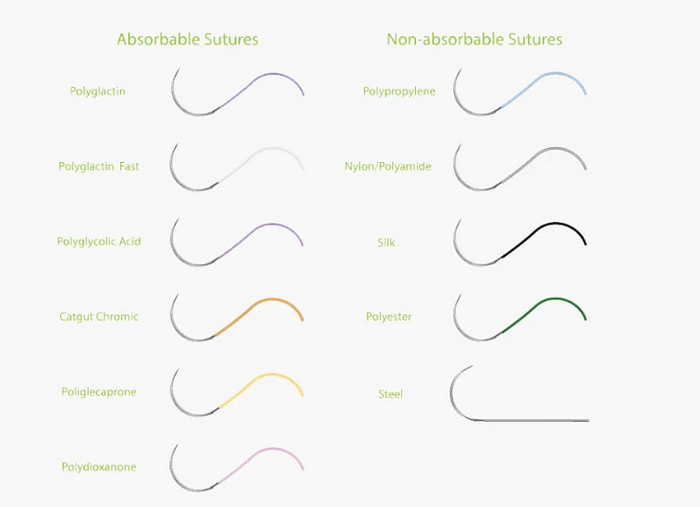A Comprehensive Guide to Different Types Of Sutures
Introduction: Understanding the Importance of Sutures in Medicine
Sutures, also known as stitches, play a crucial role in various medical procedures, including surgery and wound closure. Understanding the different types of sutures is essential for medical professionals to ensure optimal patient care and treatment outcomes.

Absorbable Sutures
Absorbable sutures are designed to dissolve over time, eliminating the need for removal. These sutures are typically made from materials such as polyglycolic acid (PGA), polyglactin (e.g., Vicryl), or polydioxanone (PDS). They are ideal for internal closures and deep tissue layers, where prolonged support is required during the healing process.
Non-Absorbable Sutures
Non-absorbable sutures, as the name suggests, do not dissolve and require removal after the wound has healed. Common materials used for non-absorbable sutures include nylon, polypropylene, and silk. These sutures are suitable for superficial wound closure and areas where long-term tensile strength is necessary.
Monofilament Sutures
Monofilament sutures consist of a single strand of material, resulting in a smooth texture that reduces tissue trauma and the risk of infection. Examples of monofilament sutures include polypropylene and nylon. They are preferred for delicate tissues and areas with a high risk of contamination.
Braided Sutures
Braided sutures are composed of multiple strands intertwined together, providing increased flexibility and knot security. Silk and polyester are common materials used for braided sutures. They are suitable for areas requiring additional strength and support, such as cardiovascular and orthopedic surgeries.
Barbed Sutures
Barbed sutures feature tiny projections along the suture’s length, allowing for a self-anchoring mechanism that eliminates the need for traditional knots. These sutures provide excellent wound closure and tissue approximation, reducing surgical time and enhancing cosmetic outcomes.
Conclusion: Choosing the Right Suture for Optimal Patient Care
Selecting the appropriate type of suture is critical for ensuring successful wound closure and promoting optimal patient recovery. By understanding the characteristics and applications of different sutures, medical professionals can make informed decisions that enhance patient outcomes and satisfaction.

Comments
Post a Comment